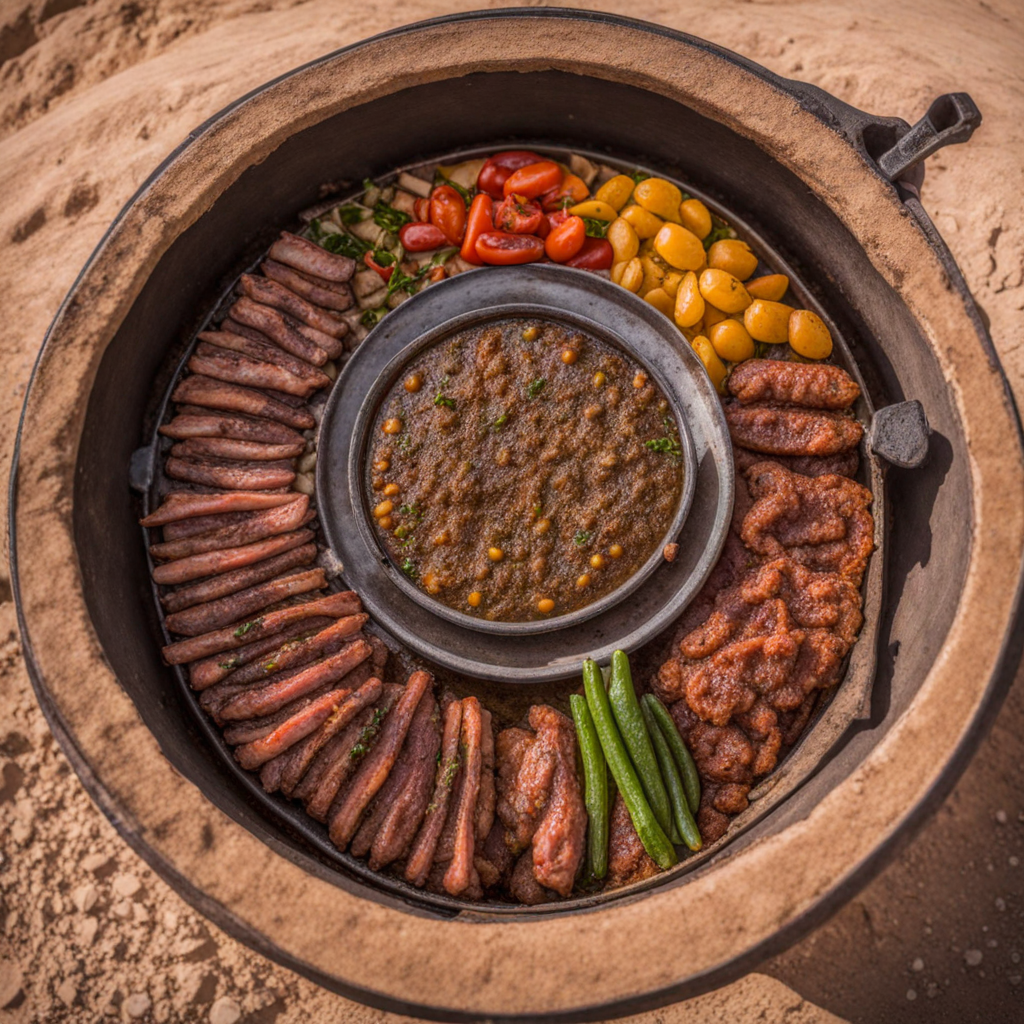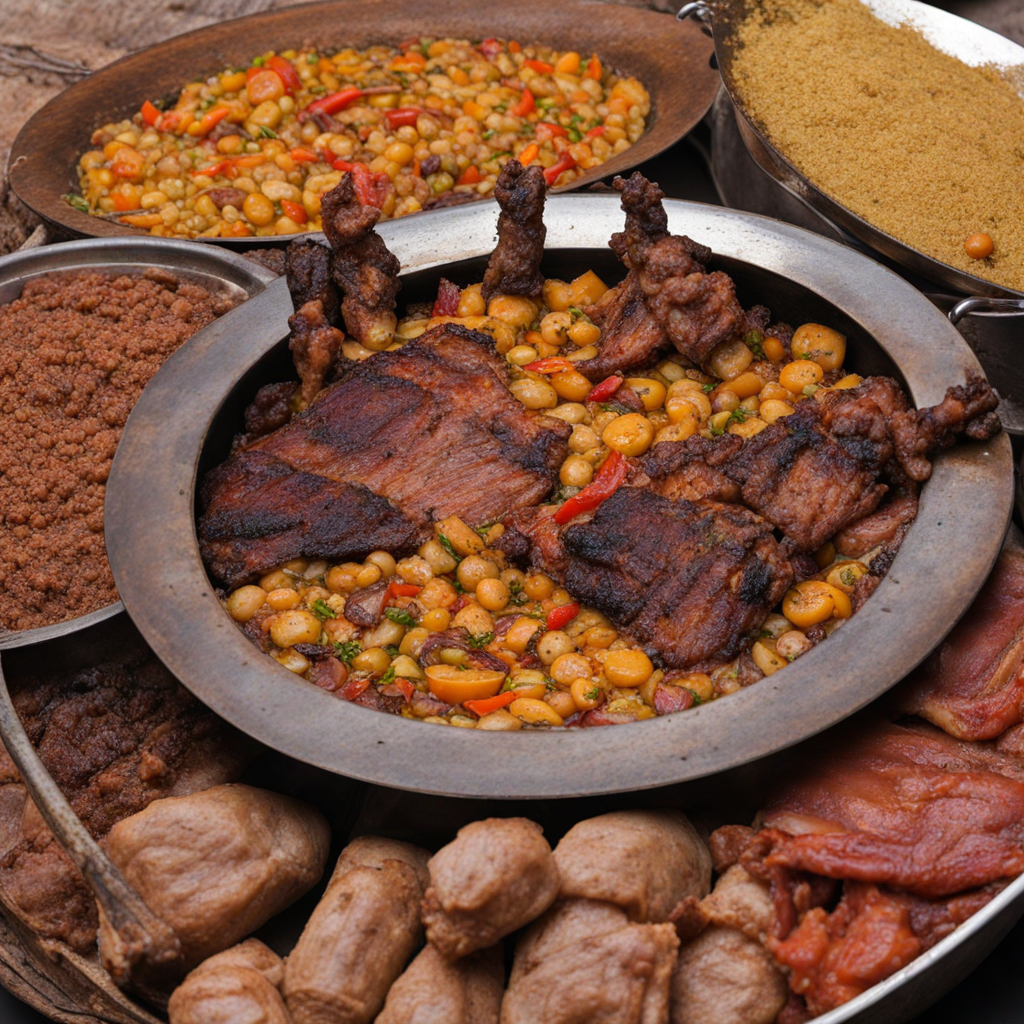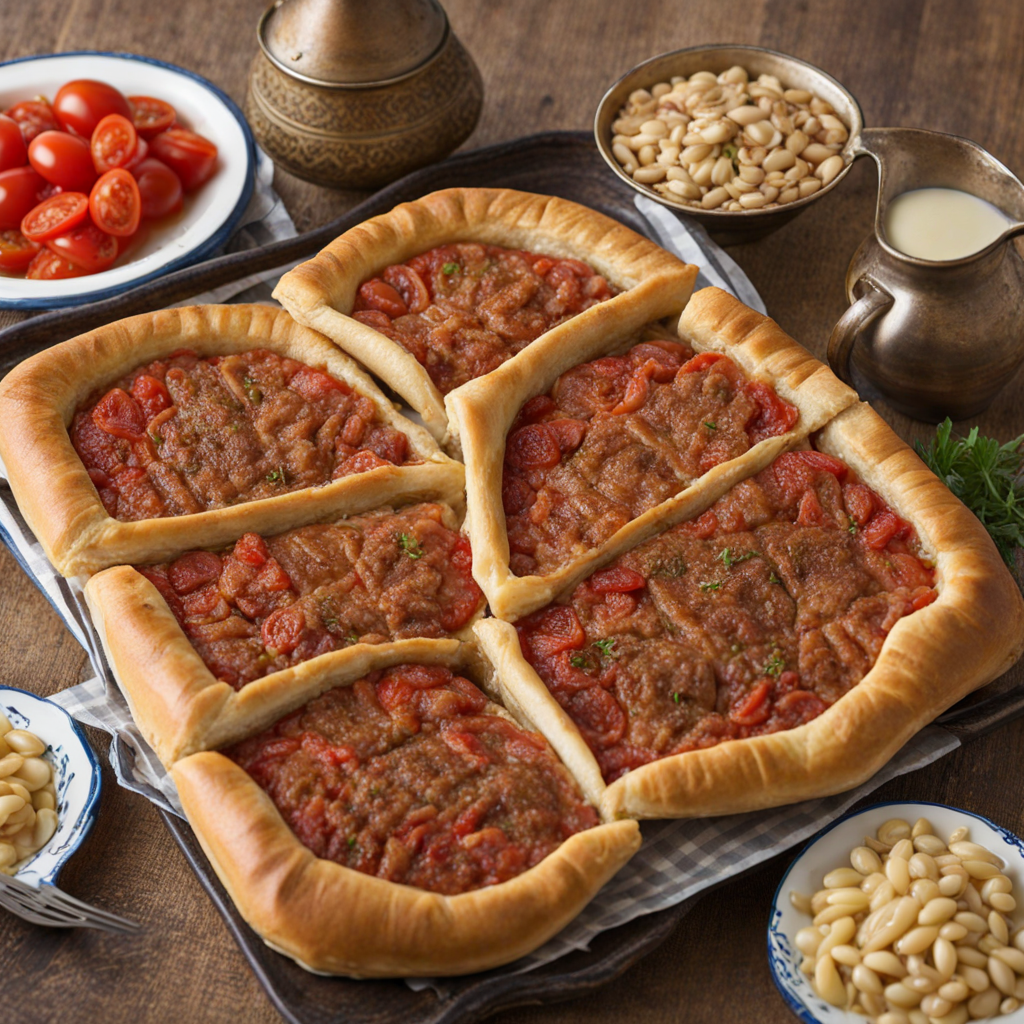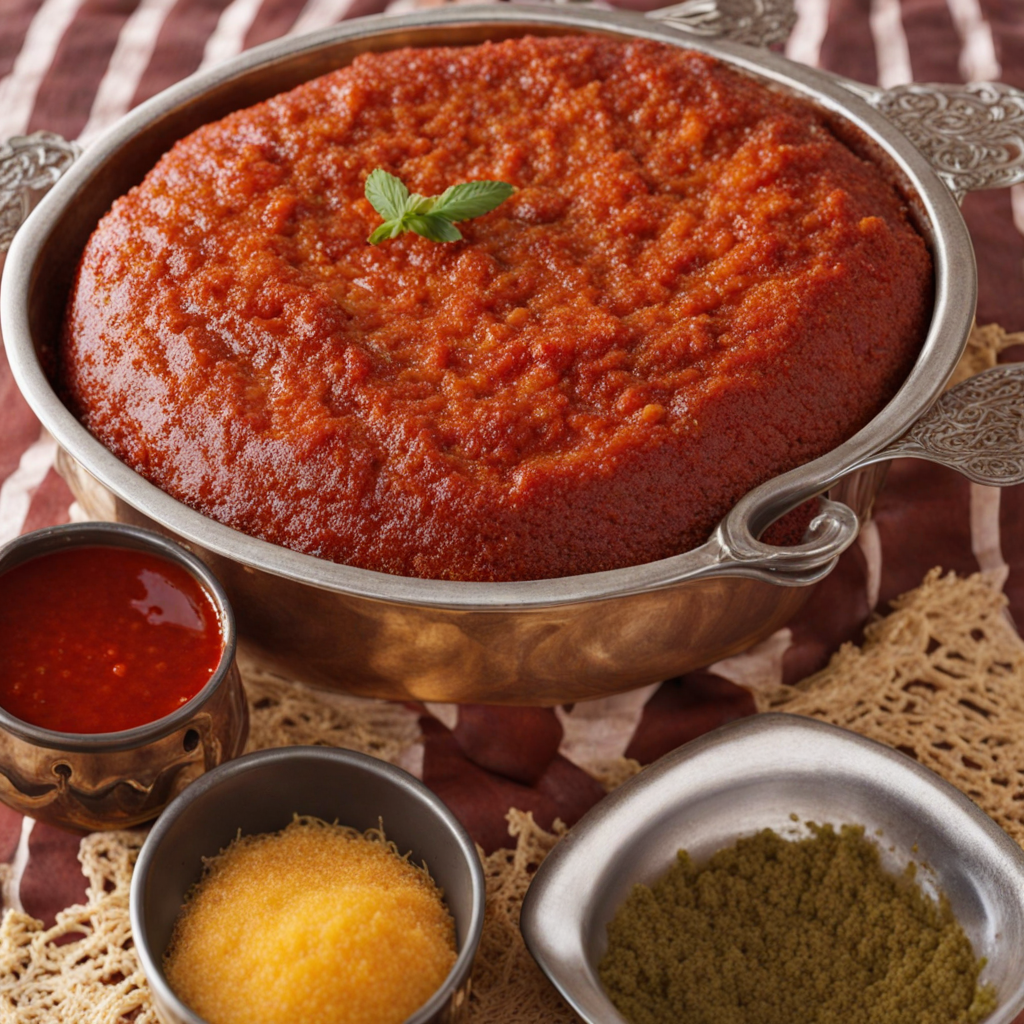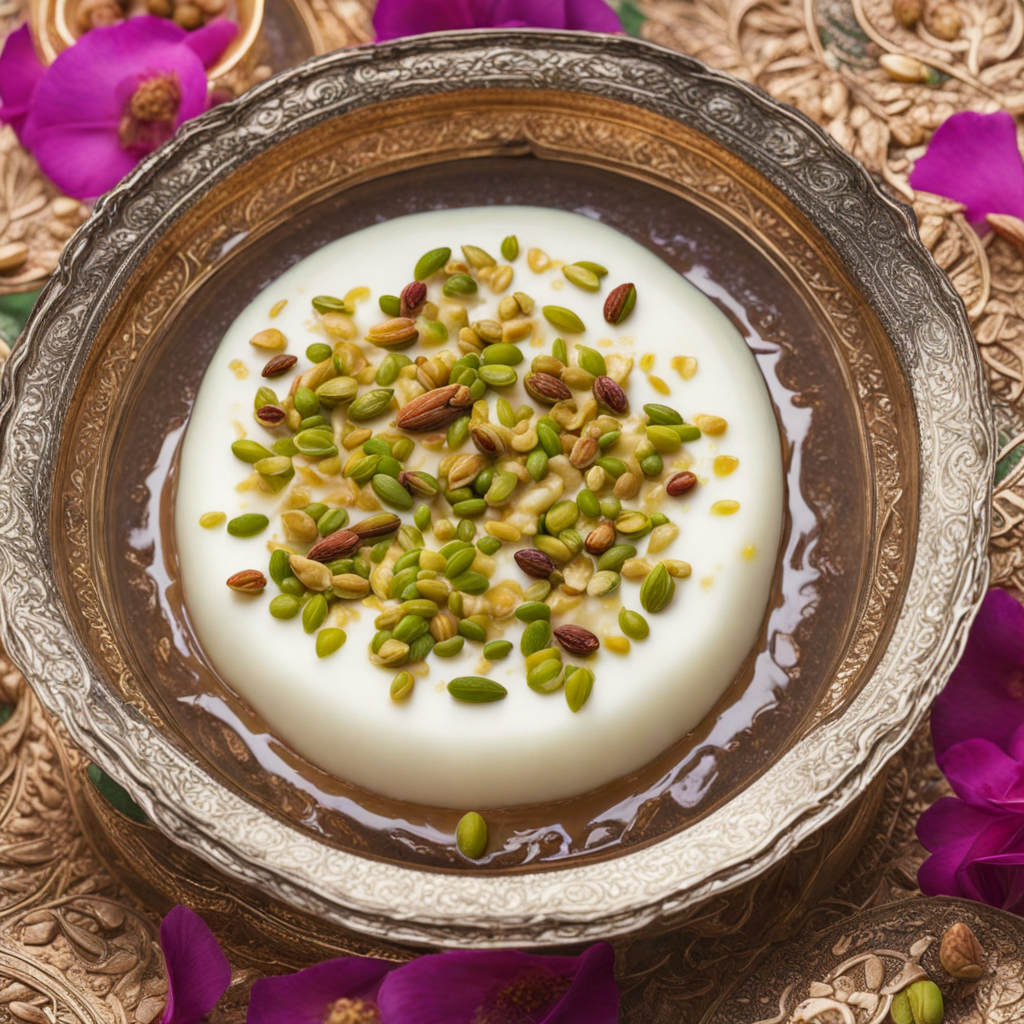Zarb
Zarb is a traditional Jordanian dish that epitomizes the rich culinary heritage of the Bedouin culture. It is a type of underground barbecue that showcases the resourcefulness of the Bedouin people, who have mastered the art of cooking in the desert. This ancient method of cooking has been passed down through generations and is often associated with gatherings and celebrations, reflecting the communal spirit of the Bedouin lifestyle. The history of Zarb dates back centuries, rooted in the nomadic traditions of the Bedouins who roamed the deserts of the Arabian Peninsula. The dish was originally a practical solution for cooking meat in harsh desert conditions, where conventional methods were challenging. The term "Zarb" itself is derived from the Arabic word for "to bury," indicating the technique of cooking meat underground. Traditionally, lamb or goat is used, as these animals are well-suited to the arid climate and are often raised by Bedouin tribes. Over time, Zarb has evolved and become a symbol of Jordanian hospitality, often served to guests as a sign of respect and generosity. The flavor profile of Zarb is rich and complex, characterized by the smoky aroma imparted by the underground cooking method. When prepared correctly, the meat becomes incredibly tender and succulent, infused with spices and herbs that enhance its natural flavors. Common spices used in Zarb include cumin, coriander, and black pepper, often complemented by fresh herbs like thyme and mint. The slow cooking process allows the flavors to meld
How It Became This Dish
Origin of زرب The dish known as زرب (Zarb) has its roots deeply embedded in the culinary traditions of the Bedouin tribes of Jordan. This traditional dish is characterized by its unique cooking method, which involves burying marinated meat and rice in a pit filled with hot coals. The origins of زرب can be traced back to the harsh desert environment where the Bedouins roamed, necessitating a cooking technique that was both practical and efficient. The method of using a pit not only allows for slow cooking, enhancing the flavors of the meat, but also serves as an ingenious way to keep food warm for extended periods in a landscape where resources are scarce. The word زرب itself is derived from the Arabic term for "to bury," which aptly describes the cooking process. Traditionally, lamb or goat is used, marinated with a mix of spices such as cumin, coriander, and cardamom, then layered with rice. The mixture is wrapped in cloth and placed in a pit, covered with hot stones and earth. This method not only infuses the meat with deep flavors but also creates a communal atmosphere, as families and friends gather around to share the meal after hours of anticipation. \n\n Cultural Significance In Jordan, زرب is more than just a meal; it is a cultural symbol representing hospitality and community. The Bedouin way of life centers around the concepts of generosity and sharing, and serving زرب to guests reflects these values. It is often prepared during significant occasions, celebrations, and gatherings, emphasizing its role in social bonding. The communal aspect of eating زرب, where everyone shares from a common platter, fosters a sense of unity and togetherness, making it a cherished part of Jordanian culture. The preparation of زرب is traditionally accompanied by storytelling and music, further enhancing its cultural significance. It is a dish that brings people together, evoking nostalgia and a connection to their Bedouin heritage. The act of cooking in the earth symbolizes a return to one’s roots, and the flavors of زرب speak to the identity of the Jordanian people. \n\n Development Over Time As Jordanian society evolved, so did the preparation and consumption of زرب. While it remains a staple of Bedouin cuisine, it has also found its place in urban centers and modern Jordanian households. In cities like Amman, restaurants specializing in traditional dishes have adapted the cooking method to suit contemporary tastes and conveniences, often using ovens or grills instead of pits. Despite these adaptations, the essence of زرب has been preserved, with chefs honoring the traditional spices and cooking techniques that have been passed down through generations. Moreover, زرب has gained recognition beyond Jordan's borders. Its popularity has spread to neighboring countries, becoming a symbol of Jordanian cuisine in the broader Middle Eastern culinary landscape. Food festivals, cultural events, and culinary showcases have highlighted زرب, allowing it to reach a wider audience and cement its place in the region’s gastronomic identity. \n\n Ingredients and Preparation The ingredients of زرب are relatively simple yet flavorful, embodying the essence of Jordanian cooking. The primary components include lamb or goat, rice, and a blend of spices. The meat is typically marinated for several hours or overnight to ensure it absorbs the flavors, often incorporating yogurt for tenderness. The rice is cooked separately and usually flavored with saffron or turmeric, giving it a vibrant yellow hue. The preparation of زرب is a communal activity, often involving the entire family. In traditional settings, the pit is dug in the ground, lined with stones, and a fire is started to heat the stones. Once the fire has burned down and the stones are hot enough, the marinated meat and rice are wrapped and placed in the pit, covered with earth to trap the heat. This method allows the flavors to meld beautifully over several hours, resulting in tender meat and fragrant rice. \n\n Modern Variations In contemporary Jordan, variations of زرب have emerged to cater to changing tastes and dietary preferences. Some modern interpretations replace the traditional meats with chicken or even vegetarian options, utilizing seasonal vegetables and legumes. The cooking method has also adapted to include grilling, allowing for quicker preparation while still capturing the essence of the dish. Restaurants may offer زرب as part of a larger mezze platter, showcasing it alongside other traditional Jordanian dishes such as mansaf, kebabs, and falafel. This shift reflects the growing trend of sharing meals in a variety of flavors, allowing diners to experience a wider range of Jordanian cuisine in one sitting. \n\n Global Influence and Recognition The rise of food tourism has played a significant role in promoting زرب beyond Jordanian borders. Travelers seeking authentic culinary experiences often seek out traditional dishes, and زرب has become a sought-after item on menus in Middle Eastern restaurants worldwide. The dish’s unique preparation and communal nature have intrigued food enthusiasts, leading to its inclusion in culinary blogs, cooking shows, and international food festivals. Moreover, initiatives to preserve and promote Jordanian culinary heritage have further elevated the status of زرب. Cultural organizations and chefs are working together to document traditional recipes and cooking techniques, ensuring that this beloved dish continues to be enjoyed by future generations. Efforts to share stories about the cultural significance of زرب alongside its preparation have contributed to a broader appreciation of Jordanian cuisine on the global stage. \n\n The Future of زرب As Jordan continues to develop and modernize, the future of زرب seems promising. While it adapts to new culinary trends and innovations, its core identity remains intact. The communal aspect of the dish, along with its rich flavors and historical significance, ensures that زرب will continue to be a cherished part of Jordan's culinary landscape. With increasing interest in traditional cooking methods and sustainable practices, many young chefs are revisiting ancient techniques, including the pit cooking method of زرب. This revival not only honors their heritage but also introduces the dish to a new generation, ensuring its survival in an ever-changing world. As long as the spirit of sharing and community remains at the heart of its preparation, زرب will undoubtedly continue to be a symbol of Jordanian culture for years to come.
You may like
Discover local flavors from Jordan


